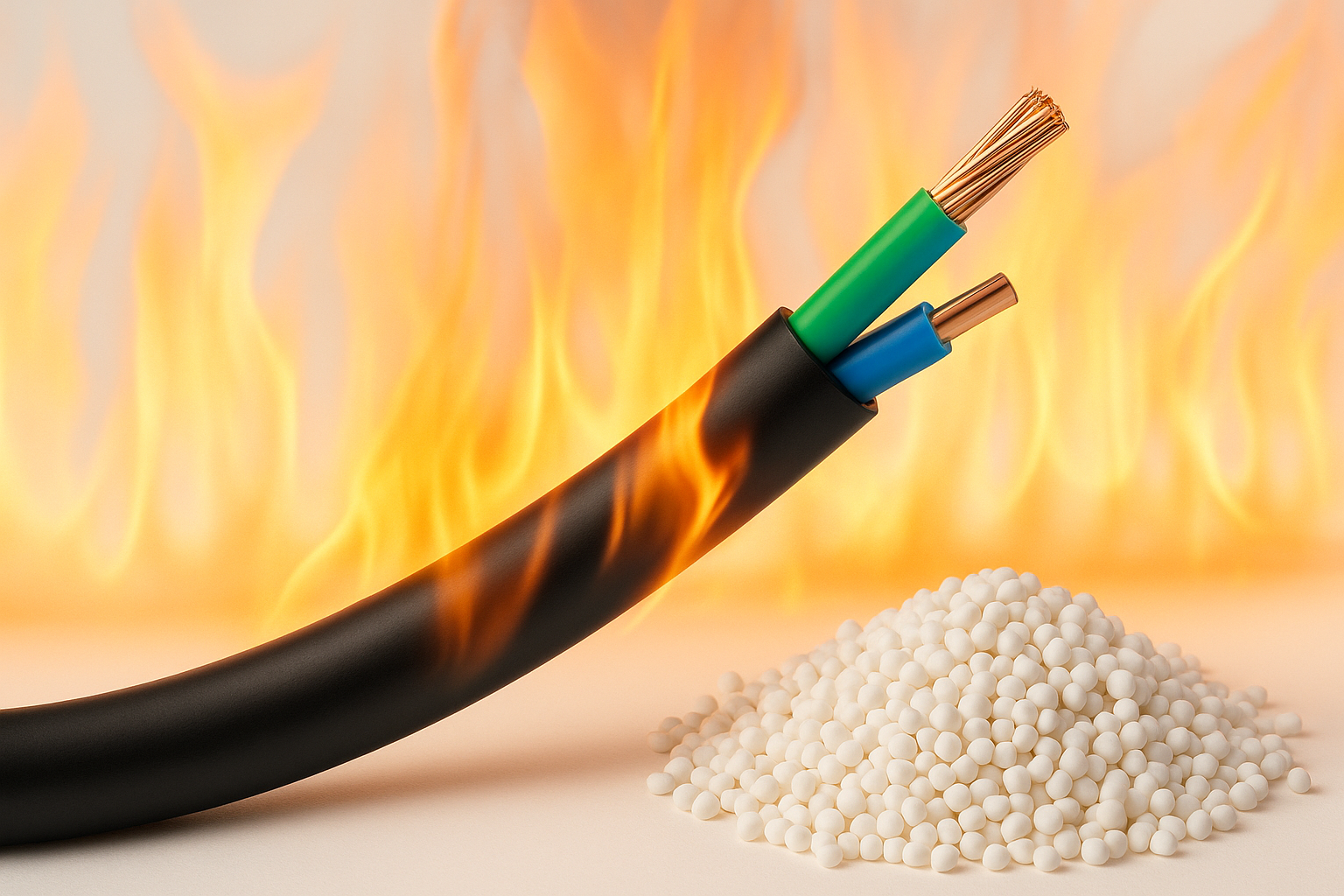LYS Polychem Blog

Low Smoke Zero Halogen (LSZH) Compound: Advantages and Applications
LSZH cables, short for “Low Smoke Zero Halogen,” are manufactured with special sheath components free of halogen substances such as chlorine, fluorine, bromine, and iodine, which produce toxic gases when burned. This feature makes them ideal for use in areas where toxic or acidic fumes could harm people and equipment, such as marine applications or computer network rooms. LSZH cables produce minimal smoke during combustion and enhance safety in poorly ventilated or high-traffic areas thanks to their self-extinguishing properties.
What is LSZH Compound?
Low smoke, zero halogen (LSZH) cable compound is a safe material that emits almost no smoke during a fire. Jackets made from special thermoplastic compounds emit a small amount of white smoke at high temperatures. This provides flame-retardant properties while also increasing the durability and electrical safety of the cables.
What Are the Advantages of LSZH Cable Compound?
In environments where fire safety is critical, durability, low toxicity, and reliable performance are paramount in cable materials. LSZH cable compound meets these needs and has become the preferred choice in the industry due to its additional benefits. These advantages include:
It offers an economical solution in terms of production costs.
It increases safety in railway systems where underground tunnels and high-voltage signal lines are used; it limits the accumulation of toxic gases in the event of a fire.
It is produced from halogen-free, low-smoke-emitting thermoplastic or thermoset compounds.
It does not produce harmful gases when exposed to high temperatures.
The cable compound protects both human health and electronic equipment against fire, smoke, and hazardous gases.
With these features, it ensures safe use in many areas while also contributing to the sustainability of infrastructure.
What is the Difference Between LSZH Cable Compound and Other Components?
While PVC compound stands out for its flexible structure, cables containing LSZH compound are rigid due to flame-retardant components. This makes LSZH cables more resistant to external factors. Their uniform appearance from an aesthetic point of view contributes to their preference, especially in projects requiring high standards.
PVC-class jackets release dense smoke and harmful gases at high temperatures. LSZH, on the other hand, is preferred in environments with limited ventilation, such as aircraft, ships, trains, server rooms, and network centers, thanks to its low smoke emission. Thus, LSZH compound is safer and more environmentally friendly than standard materials.
In Which Cable Types Is LSZH Compound Used?
LSZH compound is preferred in cables used in areas with limited ventilation, high human density, or restricted air circulation. The low smoke and toxic gas advantage provided by these cables is of great importance in environments where safety is critical. Public transportation facilities and underground tunnel systems are also areas where the use of LSZH cables is mandatory.
To ensure safety in such environments, different cable types are manufactured with LSZH compound. It is particularly preferred in the following cable types:
Power cables
Data and communication cables
Control cables
Fiber optic cables
Submarine and railway cables
LSZH cables increase fire safety in environments with limited ventilation or high human density. Thanks to their low smoke emission and non-toxic gas production, they are one of the most reliable options for protecting both human health and critical electronic infrastructure.
LSZH Standards and Usage Trends in Europe and the US (RoHS, REACH, IEC)
In Europe, regulations such as RoHS and REACH discourage manufacturers from using halogenated additives. The EN 45545-2 standard, particularly for electrical and electronic equipment used in the railway sector, promotes the use of LSZH cables by imposing low smoke density requirements. Regulatory frameworks such as WEEE and SVHC also support this transition.
In the US, many states have restricted the use of halogenated flame retardants due to environmental impacts and health risks. Safety criteria determined by UL tests, combustion ratings, and smoke density measurements encourage the transition to halogen-free materials. Furthermore, LSZH cables are becoming increasingly common in the construction,automotive, railway, and electronics industries in Europe and the US. Therefore, LYS Polychem's products meet the necessary standards for manufacturers seeking safe and environmentally friendly HFFR cable compounds.